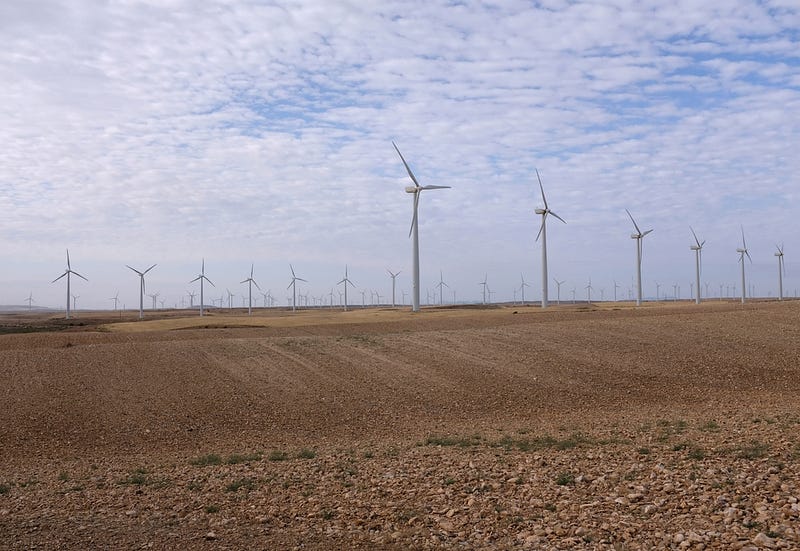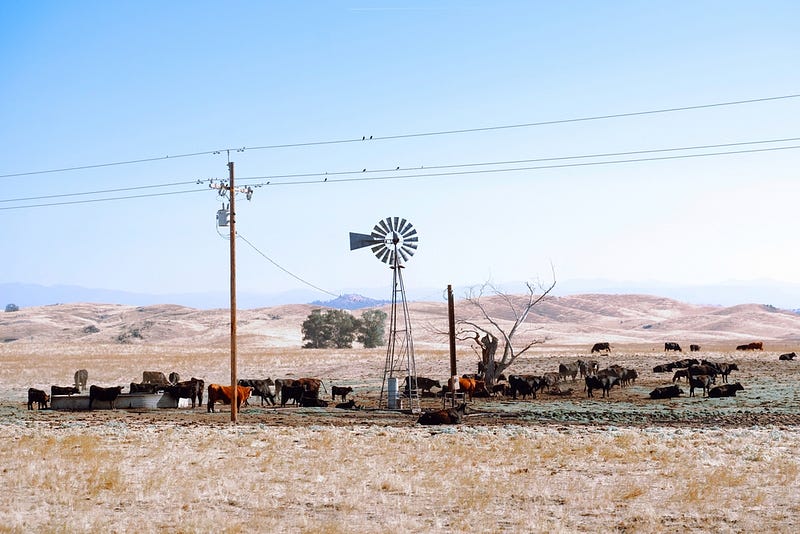The Impact of Megadrought on Food Supply: A Looming Crisis
Written on
The Reality of Climate Change
Climate change is an undeniable global challenge that is impacting various regions differently. Here in Albuquerque, New Mexico, the effects are starkly visible. As I travel through the Southwest, the realities of the ongoing megadrought become increasingly evident. However, the implications of climate change extend beyond mere drought conditions. A warmer atmosphere can hold more moisture, leading to extreme weather patterns, such as the unprecedented rainfall events seen in southeastern Kansas and other states last summer. These heavy rains, while beneficial in the short term, are often followed by rapid drying periods, known as "flash droughts," which can severely impact local water systems and agriculture.
This video explores how the West Coast megadrought is threatening food production and the livelihoods of farmers, highlighting the interconnectedness of these issues.
The Consequences of Drought on Agriculture
As the summer progressed, rising temperatures and insufficient rainfall led to significant drought conditions across the Midwest, notably affecting the tributaries of the Mississippi River. This resulted in the river hitting its lowest recorded levels in late October. The Midwest, a critical region for corn and wheat production, is particularly vulnerable. Extreme droughts have expanded across Kansas, Nebraska, and parts of Texas and Oklahoma, threatening agricultural output.

The transportation of essential crops like corn and wheat has also been hampered due to low water levels in the Mississippi, disrupting barge traffic. In Texas, drought has decimated cotton crops, and farmers face increasingly difficult decisions regarding what to plant due to unpredictable weather patterns.
This video discusses how megadroughts, water shortages, and global warming are threatening the U.S. Southwest, emphasizing the urgency of these challenges.
The Diminishing Water Supply
The Ogallala Aquifer, a vital water source for many states, is rapidly depleting, with some estimates suggesting it could take thousands of years to fully replenish. As desertification progresses, regions may struggle to produce staple crops, leading to food scarcity in the future.
California, known for its agricultural output, is facing severe challenges as well. The Imperial Valley, often referred to as the nation's salad bowl, relies heavily on water from the Colorado River, which is becoming increasingly scarce. High-water-demand crops like alfalfa and various vegetables are at risk, putting the future of these essential products in jeopardy.
Food Prices on the Rise
The ramifications of these drought conditions extend to the grocery store. For instance, Florida's orange crop was devastated by Hurricane Ian, leading to a projected 32% decline in production. Similarly, rice yields in California are expected to drop significantly due to water shortages, which will impact prices across various products, including rice, tomatoes, and wheat.

Moreover, the cattle industry is feeling the strain, with ranchers struggling to maintain their herds due to dwindling rangeland and rising feed costs. The sale of cattle has surged, with millions of animals sold in response to these pressures, indicating a shift in the protein market.
The Broader Implications of Climate Change
Climate change is not merely a political talking point; it is a pressing reality that affects our food systems and economy. While some may point fingers at political leaders for inflation and rising costs, the root causes lie deeper, primarily in our changing climate. Without significant action to address these issues, the potential for widespread food shortages looms large.
As we grapple with these challenges, it's essential to consider the implications for global food security, especially in regions already facing humanitarian crises. The situation in Somalia, where prolonged drought has led to severe malnutrition, serves as a stark reminder of the potential consequences of inaction.
In conclusion, the ongoing megadrought and its effects on food supply and prices are urgent issues that require our attention and action.